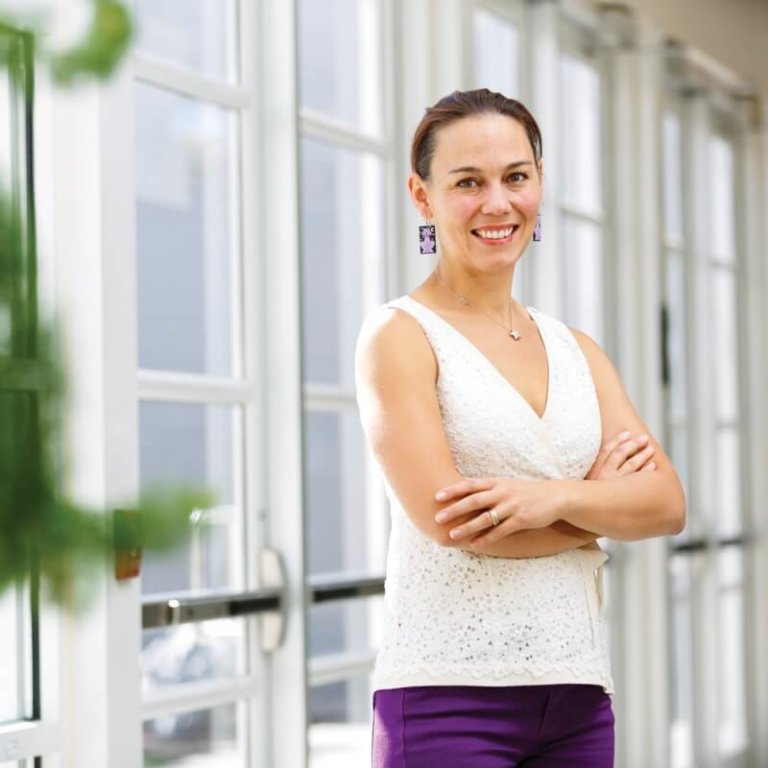Here’s a dilemma. What language course do you take if you’re raised speaking Spanish at home and speak English at school? Spanish courses for new language learners may be too easy.
Higher-level courses may be too advanced in grammar or writing. So this year, Colorado Academy started a “Heritage Spanish” class for Middle and Upper School students, using a language arts approach.
“Language IS an art,” says Sara Monterroso, Middle School Spanish teacher and a heritage speaker. “It requires refining for use in academic writing essay writing, creative writing (poetry, prose, short stories) and presentation skills, research skills, with the basic mechanics. Language is one of the first ways we present ourselves in the workplace, whether on a resume or how we present ourselves to our colleagues.
“Unless we offer a Spanish course that’s tailored to their specific language needs, we’re doing them a disservice,” she says. “We end up, ironically, having them fall behind in terms of marketable Spanish. Speaking Spanish at home doesn’t make me a good essay writer or a proficient reader.”
She’s using a textbook from Puerto Rico, where English and Spanish are the official languages, and focusing on skills such as proper punctuation, improving one’s writing, and developing critical thinking through writing and reading.
“The language – whether English or Spanish – that we speak at home with our families, or hanging out with our friends, is not the same language you use in the classroom,” Monterroso says.
“They are bilingual at home, but not fully bilingual in their writing skills or using the language in a context other than the familiar. They need to increase their vocabulary and writing skills, and use Spanish in more professional settings.”
Some heritage students may “already be beyond with the vocabulary lists and cornerstone grammar elements that are second nature to them,” Monterroso wrote in a report. “They might tune out and miss the nuances and details that are being taught and which lay the groundwork for formal use of language in academic or business settings … ”
She noted that CA students that take Spanish are learning “the formal register of that language, a kind of language that can take you from one country to another, and from one professional setting to another.” The goal is to make them fully fluent – as speakers, writers and communicators – by graduation.
“I feel gratitude for my colleagues and administration for supporting and making this happening, and for appreciating its value. And how this meshes with CA’s values,” Monterroso says.
Faculty member Jennifer Suarez also talks about the new program. “They need to have what would be the equivalent of a language arts class for an English native student, but it’s in Spanish,” she says. “They are bilingual at home, but not fully bilingual in their writing skills or using the language in a context other than the familiar. They need to increase their vocabulary and writing skills, and use Spanish in more professional settings.”
Suarez and CA’s Meg Hill, the freshman dean and a Spanish teacher, learned new approaches to teaching Spanish this summer by participating in an intensive Spanish professional development program for three weeks in Alicante, Spain.
Suarez, who teaches Spanish in the upper four grades, learned ways to teach art, theater, or cinema through Spanish, as well as how to teach Spanish through those three categories.
One technique she learned was to have students read a scene in Spanish, then have them act it out or prepare to read it in class, reviewing new words and analyzing the scene along the way.
“Then after talking about the scene, we ask students to perform it and be creative in order to come out with an original way to come out with the scene,” Suarez says. “How you improvise or present a scene; then they’d have to use the language expressions through the scene that we read. Some are expressions you won’t encounter in the normal textbook.
“Language class used to be based on, ‘Today we’re going to learn grammar or vocabulary, do grammar exercises,’” Suarez says. But now, she has several innovative options to offer students.
